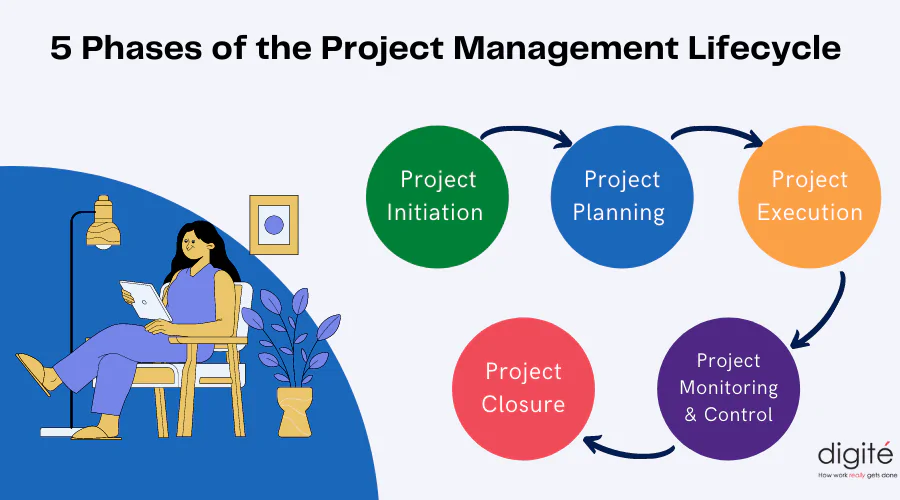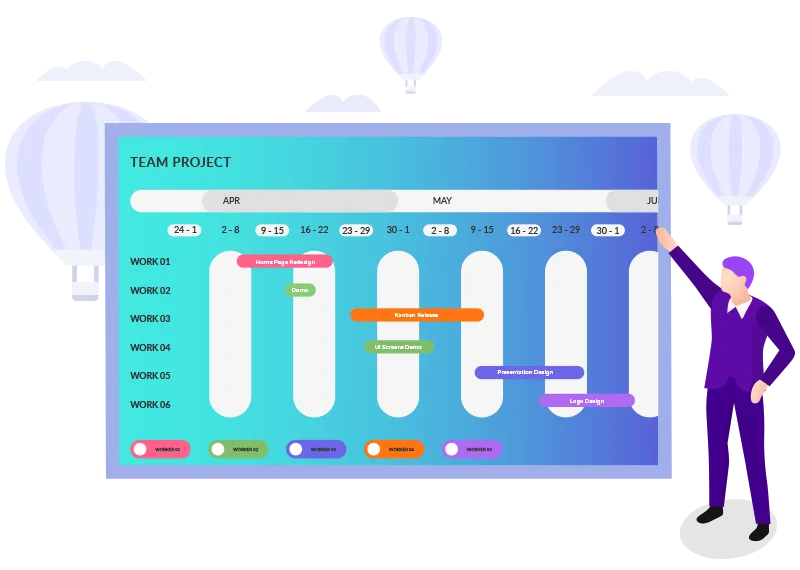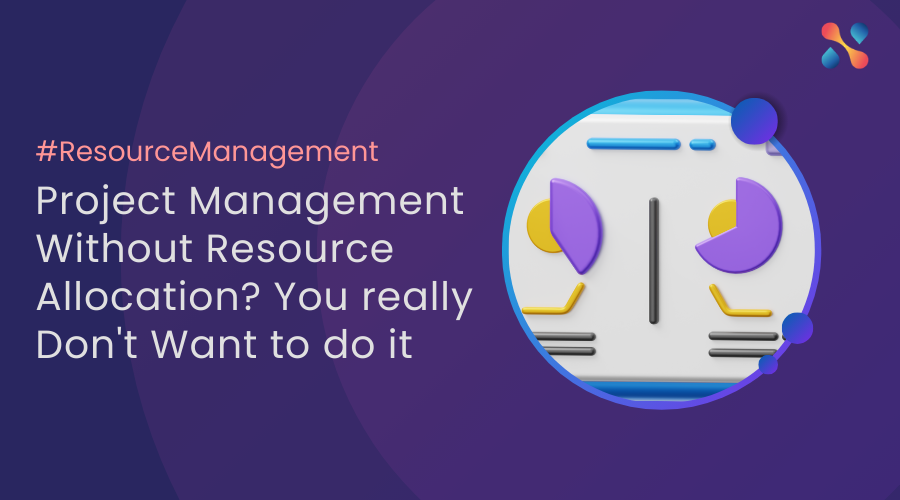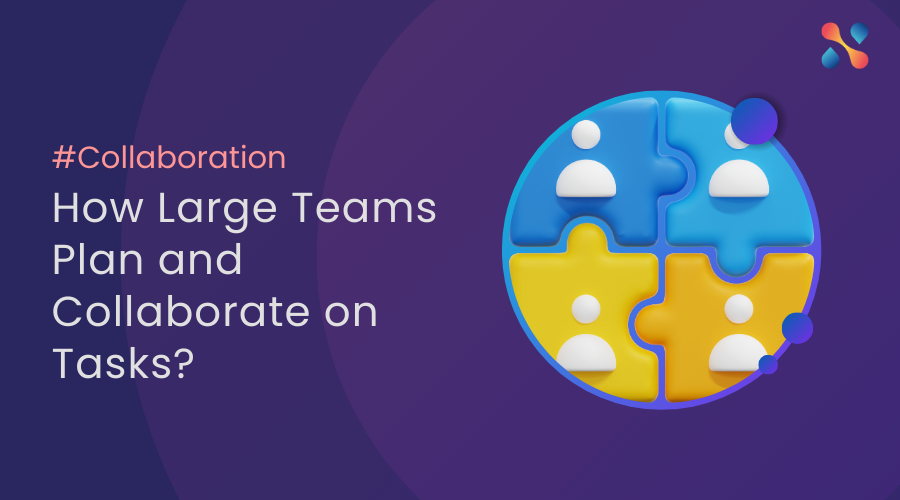Project management is a multifaceted discipline that combines techniques, processes, and strategies to plan, execute, monitor, and control projects effectively. Whether you’re overseeing a software development project or managing a construction project, understanding the key project management processes, techniques and strategies are essential for achieving success. Businesses are anticipated to increase their investments in project management.
“Projections indicate that the global project management software market is poised to reach $15.08 billion, with a projected CAGR of 10.68% by the year 2030.” In this article, we’ll explore the essential project management processes, and techniques that project managers rely on to navigate the complexities of project management and deliver successful outcomes.
The Five Project Management Processes:
1. Initiating: This process involves defining the project and obtaining authorization to begin work. Key activities include identifying project stakeholders, defining project objectives, and creating the project charter.
2. Planning: In this process, project managers develop a comprehensive project plan that outlines the scope, schedule, budget, resources, and risks associated with the project. Planning involves breaking down the work into manageable tasks, estimating resource requirements, and creating schedules and budgets.
3. Executing: During the execution process, project managers and their teams carry out the work defined in the project plan. This involves coordinating resources, communicating with stakeholders, and managing project performance to ensure that deliverables are produced according to specifications.
4. Monitoring and Controlling: This process involves tracking project performance, identifying variances from the project plan, and implementing corrective actions as needed. Monitoring and controlling activities include measuring progress against the project baseline, managing changes to the project scope, and addressing issues and risks as they arise.
5. Closing: The closing process occurs at the end of the project and involves finalizing all project activities to formally close out the project. This includes obtaining acceptance of project deliverables from stakeholders, conducting project reviews to capture lessons learned, and archiving project documentation.
Techniques used in Project Management
Project management techniques are specific methods, tools, and approaches used by project managers to effectively plan, execute, monitor, and control projects. These techniques are essential for managing project resources, controlling project scope, managing risks, and ensuring project success. Here are some commonly used project management techniques:
1. Work Breakdown Structure (WBS): WBS is a hierarchical decomposition of the project scope into smaller, more manageable work packages. It helps project managers and teams organize and define the scope of work, identify tasks, and estimate resource requirements.
2. Critical Path Method (CPM): CPM is a project scheduling technique used to determine the longest sequence of dependent tasks and identify the critical path, which represents the shortest possible duration for completing the project. It helps project managers prioritize tasks and identify potential schedule delays.
3. Gantt Charts: Gantt charts are visual representations of project schedules that show tasks, milestones, and dependencies over time. They provide project managers with a clear overview of project progress, resource allocation, and task dependencies.
4. PERT (Program Evaluation and Review Technique): PERT is a project management technique used to estimate the time required to complete a project by calculating the weighted average of optimistic, pessimistic, and most likely time estimates for each task. It helps project managers estimate project duration and identify critical tasks.
5. Risk Management: Risk management techniques involve identifying, analyzing, and responding to project risks to minimize their impact on project objectives. Techniques include risk identification workshops, risk probability and impact assessment, risk mitigation planning, and contingency planning.
6. Resource Leveling and Smoothing: Resource leveling and smoothing are techniques used to optimize resource utilization and avoid resource overallocation or underutilization. Resource leveling involves adjusting the project schedule to balance resource demand, while resource smoothing involves adjusting resource assignments to minimize resource fluctuations.
7. Earned Value Management (EVM): EVM is a project performance measurement technique that integrates cost, schedule, and scope data to assess project performance and forecast future performance. It helps project managers track project progress, identify variances, and make data-driven decisions.
8. Communication Management: Effective communication management techniques involve establishing communication channels, defining communication protocols, and ensuring that stakeholders receive timely and relevant project information. Techniques include status meetings, progress reports, and stakeholder engagement strategies.
9. Change Control: Change control techniques involve documenting, evaluating, and controlling changes to the project scope, schedule, and budget. Techniques include change request forms, change impact analysis, and change control boards to review and approve changes.
10. Quality Management: Quality management techniques involve planning, executing, and controlling activities to ensure that project deliverables meet quality standards and stakeholder requirements. Techniques include quality audits, inspections, and quality assurance processes.
In conclusion, the reliance on processes and techniques is paramount for project managers aiming for successful project completion. These established frameworks provide the necessary structure, consistency, and risk management strategies to navigate the complexities of project execution. By leveraging standardized processes and proven techniques, project managers can optimize resource utilization, ensure clear communication with stakeholders, and maintain quality standards throughout the project lifecycle.
Additionally, integrating project management software like Nimble can further enhance project management capabilities, offering features for streamlined task management, efficient collaboration, and real-time project tracking. Ultimately, embracing these methodologies not only increases the likelihood of achieving project objectives but also fosters a culture of continuous improvement and excellence in project management practices. Signup for a Free trial here.








